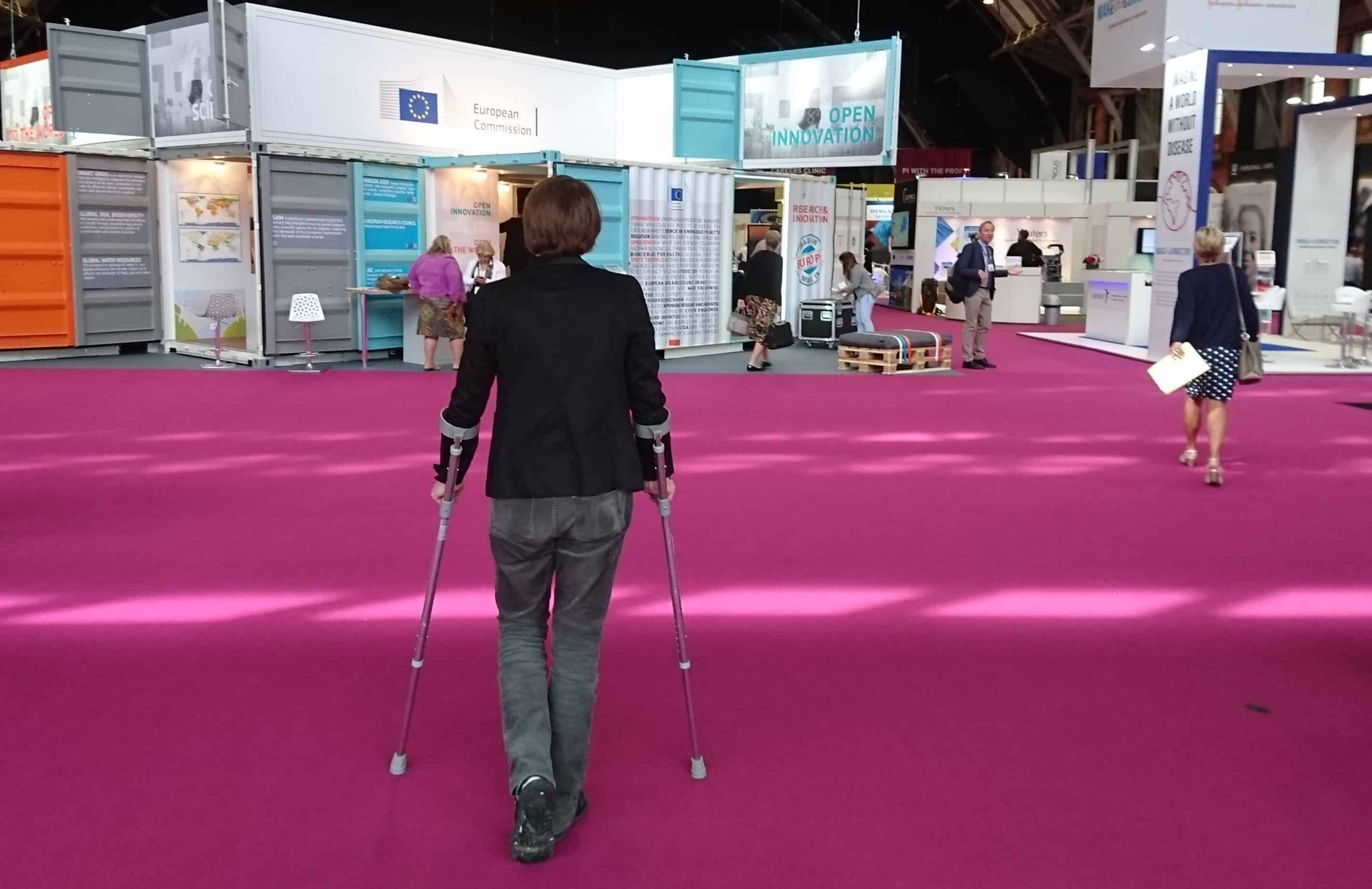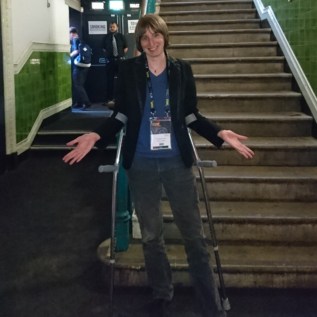
As I prepared to travel to Manchester earlier this week for the 2016 European Science Open Forum (ESOF), I had an unwanted extra item on my to-do list: working out, in detail, whether it was physically possible for me to attend.
My problem was my foot: a few weeks ago, I broke it, and as ESOF approached, it became clear that my injury wouldn’t heal in time. I was wary of trying to do a conference on crutches, but the reassuring responses to my queries (yes, my hotel had accessible rooms; yes, the venue for the conference, Manchester Central, was “very accessible”) convinced me that it would be okay. So I headed off to Manchester last Sunday for two days of science talks – and got an eye-opening lesson on what it’s like to attend a scientific conference with a physical disability.
The trip started well. My accessible hotel room had a walk-in shower and grab bars in all the right places, and staff were cheerful and helpful. However, the half-mile walk from my hotel to the ESOF venue was too long for me to manage easily. My solution was a series of taxis, which worked okay, but as the finance department at Physics World towers will attest, even short taxi rides add up when you have to take four of them a day. A conference-goer on a bare-bones travel stipend would struggle to afford it.
Once I reached the conference venue, getting to the scientific sessions was straightforward, if strenuous. Most ESOF talks were located on the venue’s ground floor, and there were lifts for those that weren’t. However, like most convention centres, Manchester Central is a large building, and this posed its own challenges. ESOF attendee Carole Mundell, an astrophysicist at the University of Bath who is also using crutches at the moment, summed up the problem nicely. “Everywhere feels (or sometimes is) incredibly far away on crutches, which are remarkably uncomfortable and tiring after a short time,” she said. “Corridors feel long even when one is on the way to the lift.”

The real issues, though, lay with the conference’s social programme. Mundell described the usual stand-up, drinks-and-nibbles receptions as “quite exhausting”, and at the official ESOF party on Monday evening, I ran into the only serious problem of my trip. The party was on an upper floor of the Albert Hall, Manchester’s famous music venue, and when I asked a bouncer if there was a lift, he looked at me as if I’d requested a rocket ship, said “No”, and jerked his head in the direction of a long staircase (left).
In retrospect, there must have been a service lift somewhere, and I ought to have complained until I was taken there. But it didn’t occur to me at the time, and it might not have done me much good if it had. Another crutch-using ESOF attendee, the American science journalist Laurie Garrett, told me that when she’d asked conference staff to open up a cordoned-off section of an auditorium so she could sit in an aisle seat (there being none left in the main area), they refused “until I put up a stink, at which point they treated me like someone who’d put up a stink.”
Unlike people with more severely restricted mobility, I am capable of climbing stairs, so that’s what I did – slowly, carefully, one hop at a time. But once I reached the top, I found that in the entire hall full of scientists listening to music and chatting over drinks, there was not a single chair or other place to sit down. That made the party inaccessible to me, and after 15 minutes, I had to leave.
The experience left me intensely frustrated – not for myself, but for scientists with serious permanent disabilities, who deal with these problems all the time. What effect this has on their careers and conference attendance is hard to say, as everyone is different (but here is a description of the accommodations one physicist with permanent disabilities needs to help her attend events). However, it did strike me as potentially significant that although ESOF was expecting 4500 attendees, Garrett and Mundell were the only other visibly disabled people I could find there – and their injuries, like mine, are not permanent.
One final thought. As I was leaving the conference on Tuesday, I noticed a kerfuffle on the #ESOF16 Twitter hashtag. Apparently, the ESOF panel on EU science policy was entirely composed of white men, and several people (men as well as women) were complaining about it. The issue of all-male panels is real and the attention being paid to it is encouraging. However, as I crawled awkwardly into the final taxi of my trip, it occurred to me that when it comes to supporting diversity in science, getting more women onto panels is really only the beginning.



